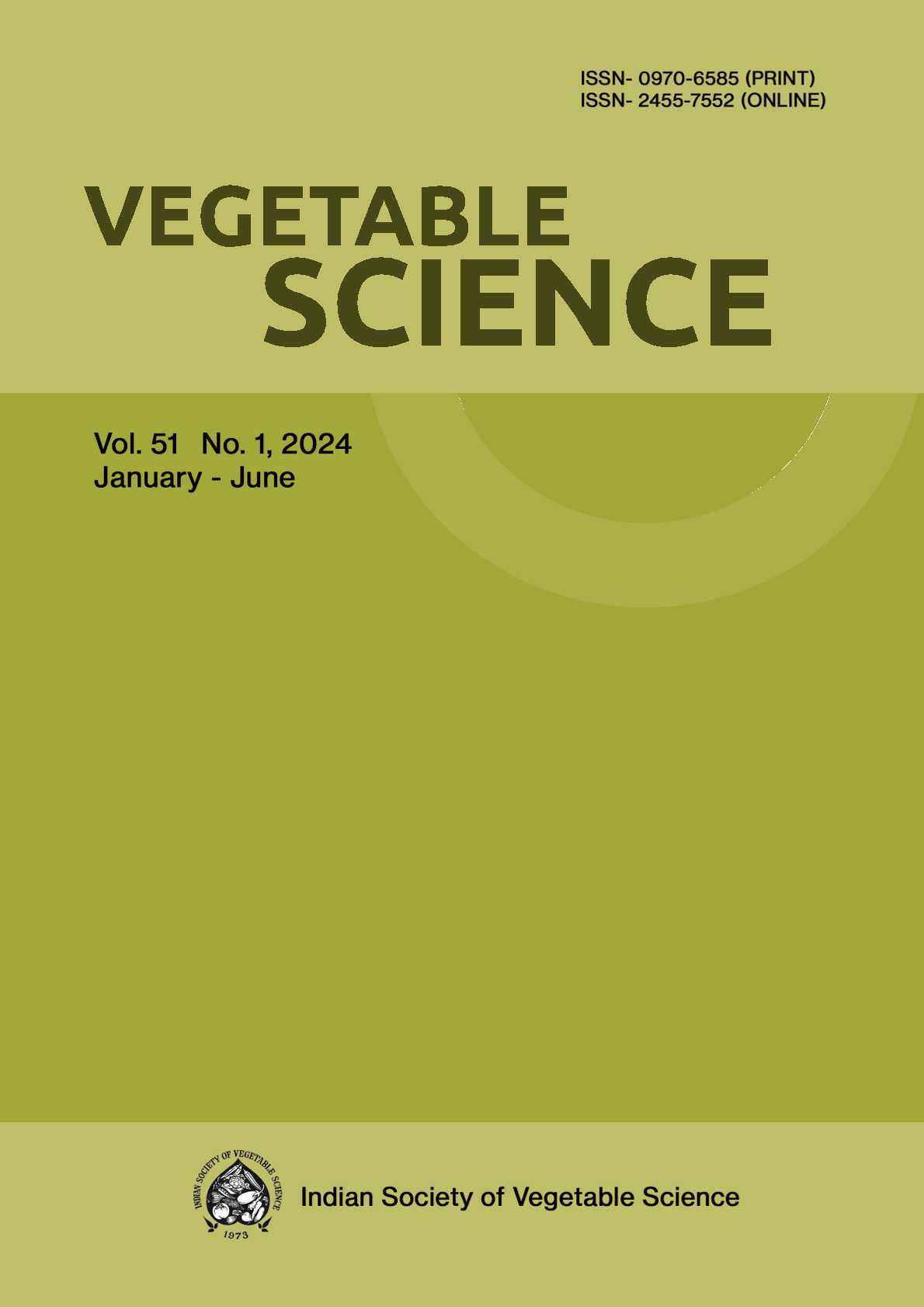Microsatellites mining in Capsicum genomes and development of SSR markers in Capsicum baccatum
DOI:
https://doi.org/10.61180/vegsci.2021.v48.i1.13Keywords:
Genome, Microsatellites, Markers, CapsicumAbstract
Capsicum species is versatile vegetable cum spice crop,
which have high commercial value because of its appealing
color and pungency. Crop breeding and improvement of
chilli requires genomic resources. Computational mining of
chromosome wise microsatellites was carried out using
search criteria of minimum repeats of 12 for mono, 6 for di
and 5 for tri, penta & hexa nucleotides and identified 130942,
271650 and 2,78,143 perfect SSRs in C. baccatum cv. PBC81,
C. annuum cv. Zunala and in C. chinense cv PI159236
genomes, respectively. Of these perfect SSRs; 8999, 18060
and 18019 were in compound form in the three species
genomes respectively. Overall density of SSRs/Mbp
observed was 173.66, 149.39 and 137.55 in C. baccatum, C.
chinense and C. annuum. From 130942 perfect SSRs, total
59510 primer pairs were designed in C. baccatum and 16
SSR markers were primarily selected to test the usability
and validated in a set of eight genotypes consisting of four
accessions of C. annuum, one accession each of C. chinense
and C. frutescens and two accessions of C. baccatum. All
the 16 SSR markers exhibited expected size of amplification
product. This C. baccatum based SSRs will be useful in
characterization of germplasm and marker assisted breeding
Downloads
Published
Issue
Section
License

This work is licensed under a Creative Commons Attribution-NonCommercial-NoDerivatives 4.0 International License.






